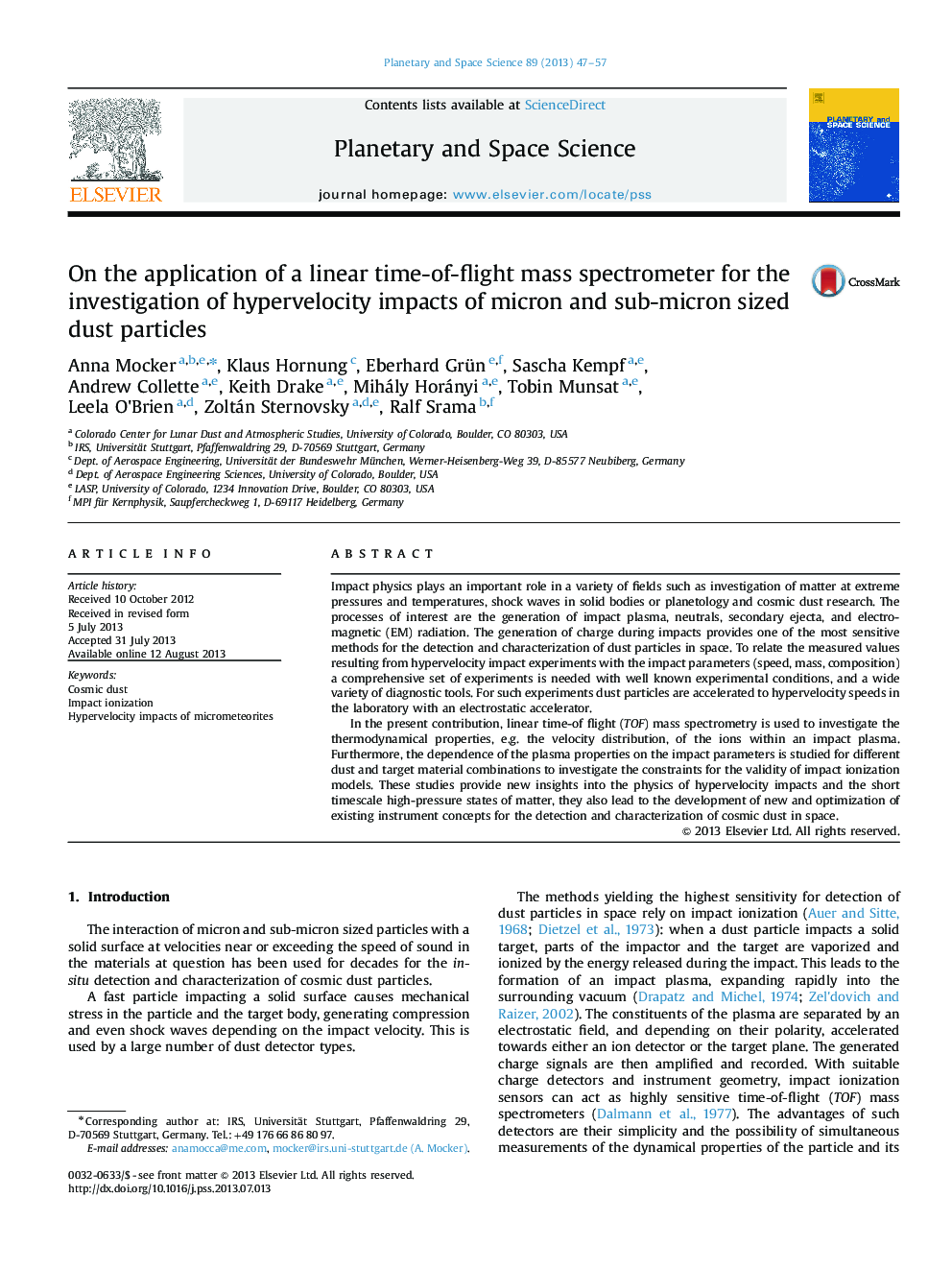| Article ID | Journal | Published Year | Pages | File Type |
|---|---|---|---|---|
| 1781233 | Planetary and Space Science | 2013 | 11 Pages |
•The properties of impact plasmas are investigated with linear TOF mass spectrometry.•The charge yield is related to the partition of the gained specific internal energy.•The measured mass line profile can be inverted for the distribution of initial velocity.•This allows new insights into physics of hypervelocity impacts and short timescale high-pressure states of matter.•This also leads to new instrument concepts for the detection and characterization of dust in space.
Impact physics plays an important role in a variety of fields such as investigation of matter at extreme pressures and temperatures, shock waves in solid bodies or planetology and cosmic dust research. The processes of interest are the generation of impact plasma, neutrals, secondary ejecta, and electromagnetic (EM) radiation. The generation of charge during impacts provides one of the most sensitive methods for the detection and characterization of dust particles in space. To relate the measured values resulting from hypervelocity impact experiments with the impact parameters (speed, mass, composition) a comprehensive set of experiments is needed with well known experimental conditions, and a wide variety of diagnostic tools. For such experiments dust particles are accelerated to hypervelocity speeds in the laboratory with an electrostatic accelerator.In the present contribution, linear time-of flight (TOF) mass spectrometry is used to investigate the thermodynamical properties, e.g. the velocity distribution, of the ions within an impact plasma. Furthermore, the dependence of the plasma properties on the impact parameters is studied for different dust and target material combinations to investigate the constraints for the validity of impact ionization models. These studies provide new insights into the physics of hypervelocity impacts and the short timescale high-pressure states of matter, they also lead to the development of new and optimization of existing instrument concepts for the detection and characterization of cosmic dust in space.
